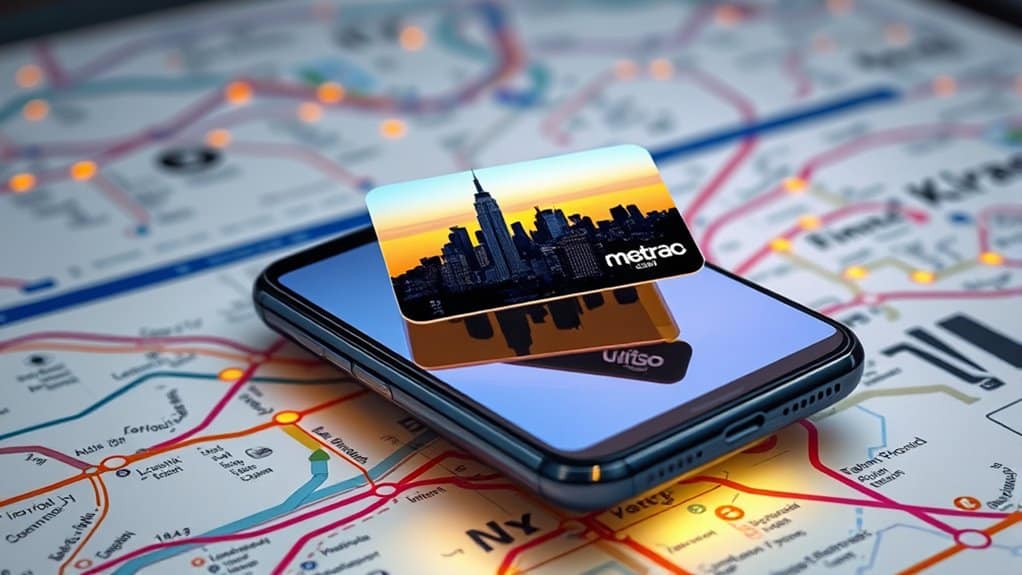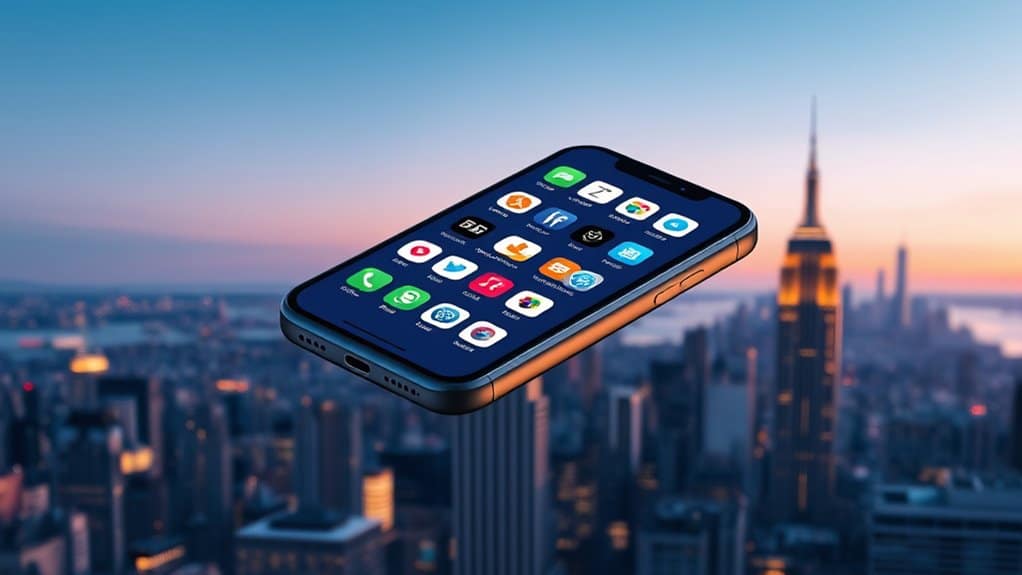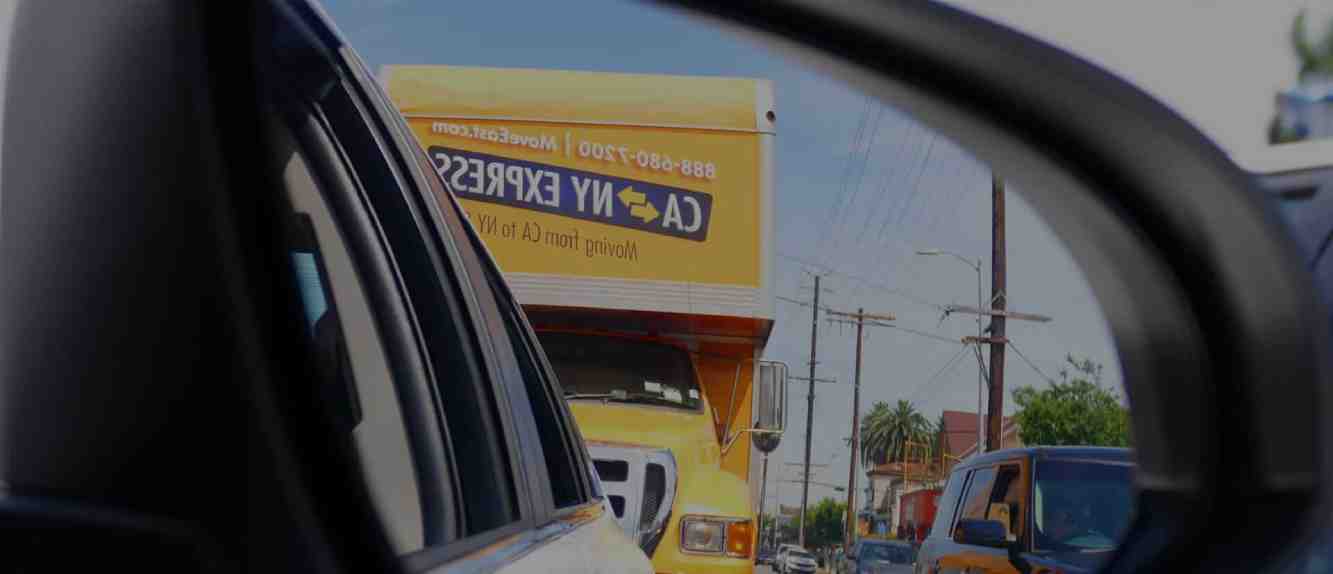For your first week in NYC, you'll need essential digital and physical preparations. Start by activating a local SIM or eSIM, downloading transit apps like Citymapper, and storing encrypted copies of important documents. Pack weather-appropriate layers, keep emergency contacts handy, and set up an OMNY payment card for public transportation. Don't forget to locate nearby grocery stores, healthcare facilities, and your local NYPD precinct. The city's extensive guide reveals more strategies for a smooth changeover.
Setting Up Your Phone and Transit Apps

When planning your move to New York City, setting up reliable phone connectivity should be your first priority.
You'll need to decide between physical SIM activation or eSIM options, depending on your device's carrier compatibility. For Samsung S21 Ultra or newer iPhones, eSIMs offer flexible data monitoring without physical card swaps.
Before arrival, check your phone's compatibility with local networks and consider pre-purchasing SIMs to avoid airport markups.
Once you're set up, download essential transit apps and enable Wi-Fi calling for areas with weak signals.
Don't forget to implement mobile security measures and establish backup solutions for your photos through Google Photos syncing.
To avoid expensive roaming charges, activate your local SIM or eSIM immediately upon landing - you'll need reliable data for maneuvering the city's transit system.
Essential Documents and Paperwork
When settling in New York, you'll need a secure system for both digital and physical copies of your essential documents, including identification, immigration papers, and proof of residency.
Store physical documents in a waterproof, fireproof container at home, while keeping encrypted digital copies on a secure cloud service and an external hard drive for backup.
You'll want quick access to important travel IDs like your passport, driver's license, and IDNYC card, especially when traversing the city's various security checkpoints and administrative offices.
Digital Copies and Backups
Protecting your essential documents through digital backups isn't just a convenience - it's a crucial step for your move to New York. Your digital organization strategy should include secure cloud storage and encrypted portable drives for quick access to important paperwork.
Implement backup strategies that keep your documents safe while ensuring they're readily available when needed.
- Store scanned copies of your ID, passport, and social security card in password-protected cloud folders
- Create digital archives of rental agreements and utility accounts for easy reference
- Maintain encrypted USB drives with medical records and insurance information
- Set up automated reminders for document expiration dates
- Keep synced backups across your devices for seamless access during your relocation
Physical Document Storage Solutions
Three essential storage solutions guarantee your vital documents remain secure and accessible in New York.
First, opt for climate-controlled storage units that protect your papers from temperature fluctuations and humidity damage. These facilities maintain consistent conditions, preventing deterioration of important documents like contracts, photos, and legal papers.
Second, confirm your storage provider offers multi-layer security features, including 24/7 surveillance, encrypted access controls, and professional security personnel.
Finally, choose a facility that provides flexible document retrieval options, allowing you to access your materials through physical pickup or next-day delivery when needed.
Remember to verify that your chosen storage solution maintains PRISM Privacy+ certification and offers secure destruction services for when you need to dispose of sensitive documents properly.
Key Travel Identification Forms
Beyond storing your documents securely, you'll need to have the right identification forms ready for travel in New York.
Starting May 7, 2025, you'll require a REAL ID-compliant credential or acceptable alternative for domestic flights and federal facility access. Plan ahead by gathering your essential travel documents and visiting the DMV for your REAL ID application.
- Original Social Security card or W-2 form showing your complete number
- U.S. passport or certified birth certificate to prove identity
- Two recent documents (within 60 days) proving NY residency
- Current out-of-state license if you're transferring from another state
- Permanent resident card or visa documentation for non-U.S. citizens
If you're under 18, you won't need ID when traveling with a compliant adult, but it's still wise to carry identification.
Navigating Your Local Neighborhood
New York's diverse neighborhoods offer unique experiences that shape your daily life in the city. You'll discover distinct local cuisine options, from Italian restaurants in Morris Park to Caribbean eateries in Prospect-Lefferts Gardens.
Community events, like Morris Park's Columbus Day Parade, help you connect with neighbors and build relationships.
To navigate efficiently, familiarize yourself with nearby subway lines and transportation options. If you're near Prospect-Lefferts Gardens, you'll have access to the Q, 2, 5, and B lines.
Consider your neighborhood's proximity to green spaces - Windsor Terrace residents enjoy walkable access to Prospect Park, while Throgs Neck offers waterfront activities.
Research your local NYPD precinct and emergency services, noting that areas like Morris Park and Throgs Neck rank relatively well for safety in NYC.
Weather-Ready Wardrobe Basics
Living in New York City demands a versatile wardrobe that adapts to the city's unpredictable weather patterns. Mastering weather layering is essential, starting with breathable base layers and adding insulating mid-layers for temperature fluctuations. Your fabric choices should prioritize moisture-wicking materials that keep you comfortable during humid summers and rainy springs.
- Lightweight, convertible jackets with zip-off sleeves for seamless shifts between morning chill and afternoon warmth
- Quick-dry pants paired with waterproof boots to navigate unexpected rain showers
- UV-protective accessories including wide-brimmed hats and sunglasses for intense midday sun
- Breathable sneakers with moisture-wicking socks for extensive city walking
- Compact umbrellas and rain-resistant bags that fit easily in your daily carry
Safety and Emergency Contacts
You'll need quick access to essential emergency contacts in New York City, including the universal 911 for immediate police and fire response, and 311 for non-emergency city services.
It's vital to save local numbers like the Building Emergency line (718-721-0700 during business hours, 1-800-352-1486 after hours) and nearby hospitals (Parkway: 718-990-4100, North Shore: 718-830-4000) in your phone's contacts.
For additional peace of mind, you should create an emergency kit with basic supplies and keep a printed list of these important numbers in case your phone isn't accessible.
Important Local Contact Numbers
Three essential emergency numbers form the backbone of New York City's safety response system, with 911 serving as the primary contact for immediate police and fire emergencies.
You'll want to store these local emergency contacts and community service numbers in your phone, as they're vital for maneuvering through various situations in the city.
- 311 connects you to non-emergency city services, from noise complaints to street cleaning inquiries
- Poison Control (212-340-4494) provides immediate assistance for exposure to harmful substances
- Con Edison (212-487-4444) handles power outages and gas emergencies
- The Domestic Violence Hotline (800-621-4673) offers 24/7 crisis intervention
- Building Emergency services (718-721-0700) address structural and maintenance issues during business hours
Keep these numbers handy—they're your lifeline to essential services throughout the five boroughs.
Emergency Kit Essentials
While emergency contacts are essential, maintaining a well-stocked emergency kit in your New York home forms the foundation of disaster preparedness.
Your emergency kit should include one gallon of drinking water per person daily, non-perishable foods, and a manual can opener. Store these items in an easily accessible container, along with critical safety supplies like a first aid kit, flashlight, extra batteries, and a battery-operated radio.
Don't forget to pack important documentation, including copies of prescriptions, emergency contacts, and a small regional map.
If you have children or pets, include specialized items like diapers, formula, pet food, and comfort items.
For water safety, keep iodine tablets and unscented bleach with an eyedropper, but only use bleach when authorities direct you to do so.
Public Transportation Know-How
New York City's expansive public transportation network stands as one of the world's most extensive systems, connecting millions of residents and visitors across the five boroughs.
You'll need to master subway etiquette, navigate bus routes, check ferry schedules, plan airport transfers, and learn commuter tips to move efficiently through the city.
Here's what you'll encounter daily:
- 24/7 subway service across 472 stations, with express and local trains running on colored-coded lines
- OMNY contactless payment system working seamlessly on buses and trains
- Real-time tracking through apps like Citymapper and MTA Bus Time
- Free Staten Island Ferry service connecting Manhattan to Staten Island
- Direct airport connections via AirTrain to JFK and LaGuardia, plus rail service to Newark
Remember to download essential apps and keep your payment method ready before starting your journey.
Banking and Payment Methods
You'll want to set up popular mobile payment apps like Apple Pay, Google Pay, or Venmo before exploring NYC's diverse payment landscape.
Make sure you've mapped out your bank's ATM network locations across the city to avoid unnecessary fees, and consider using Capital One 360 or Charles Schwab for fee-free withdrawals.
For added security, it's smart to carry multiple cards stored separately, ensuring you're never stranded if one gets lost or stolen.
Mobile Payment Apps Setup
Setting up mobile payment apps in New York City has become an essential step for managing daily transactions efficiently. Following current mobile payment trends, you'll want to prioritize apps that offer both security and convenience.
Start with Apple Pay or Google Pay for contactless payments, then add Cash App for peer-to-peer transfers. For parking tickets and fines, download NYC Pay or Dispute to handle municipal payments seamlessly.
Key app security tips to implement:
- Enable biometric authentication (fingerprint or face recognition)
- Use unique, strong passwords for each payment app
- Set up transaction notifications for real-time monitoring
- Download apps only from official sources (App Store/Google Play)
- Keep your phone's operating system and payment apps updated
These measures will help protect your financial transactions while maneuvering through NYC's digital payment landscape.
ATM Network Access Tips
Three key ATM networks in New York City provide essential cash access points for residents and visitors.
You'll find Allpoint ATMs in major retailers like Target, Walgreens, and CVS, while traditional bank networks including Chase, Citibank, and Bank of America offer extensive coverage throughout the city.
Urban ATM placements in airports, malls, and office buildings guarantee convenient access.
For fee avoidance, stick to your bank's network or Allpoint ATMs, which partner with many banks for surcharge-free transactions.
Avoid standalone ATMs in hotels and nightclubs, as they often charge up to $7 per withdrawal.
When you need cash for bodegas or street vendors, plan ahead and withdraw from in-network locations.
Remember that while most businesses accept cards, NYC law requires all vendors to accept cash payments.
Multiple Card Safety Strategies
While visiting New York City requires careful planning, implementing multiple card safety strategies stands as a critical priority for protecting your finances.
Your card security approach should include backup strategies that protect against theft and fraud while ensuring continuous access to funds during your stay.
- Keep your primary credit card separate from backup cards by storing them in different secure locations.
- Use an RFID-blocking wallet to prevent electronic pickpocketing in crowded subway stations.
- Store digital copies of your cards' front and back in an encrypted cloud service.
- Carry a mix of payment methods, including an emergency-only credit card with a separate account.
- Set up instant mobile alerts for all transactions to quickly detect unauthorized charges.
These measures will help safeguard your finances throughout your New York adventure.
Must-Have Mobile Applications

Maneuvering New York City becomes considerably easier when you've got the right mobile apps at your fingertips. For ideal travel efficiency, start with navigation essentials: Citymapper for real-time subway updates, and Google Maps for thorough city navigation.
Download Eric's Offline Subway Map as a backup when you're without internet connection.
For dining and attractions, you'll want Yelp's verified restaurant reviews and Tripadvisor's NYC Go integration for curated trip planning. These app recommendations will help you locate everything from top-rated restaurants to public restrooms.
Don't forget to install AirBnB for accommodation options and Eric's New York Ticket Purchases for discounted attraction entries. With these apps loaded on your phone, you'll navigate the city like a seasoned local.
Local Shopping and Services
New York City's shopping scene offers an unmatched array of retail experiences, from world-famous luxury districts to hidden vintage gems.
You'll find luxury retail along Fifth and Madison Avenues, while trendy shops and local boutiques line the streets of SoHo and the Flatiron District.
For budget options and vintage finds, head to Canal Street and Orchard Street, where street vendors and unique stores await.
Don't miss the artisanal markets and cultural shopping experiences at Chelsea Market and Essex Street Market.
- Browse designer boutiques at Bergdorf Goodman's ornate showrooms
- Explore SoHo's cobblestone streets lined with contemporary art galleries
- Discover unique treasures at Union Square's weekend farmers' market
- Hunt for vintage clothing in East 9th Street's eclectic shops
- Sample local delicacies at Chelsea Market's food halls and artisan stalls
Packing Smart for Daily Adventures
Successfully steering through daily adventures in NYC requires strategic packing that balances comfort, functionality, and style.
Start with versatile clothing choices: lightweight, breathable fabrics that adapt easily from day to night activities. Pack quick-drying socks and comfortable walking shoes for extensive exploration.
Your smart packing strategy should focus on multipurpose items and weather-ready gear. Carry a daypack equipped with essentials: a MetroCard, portable charger, water bottle, and weather protection.
Don't forget UV protection and travel-sized toiletries for unexpected needs. Layer your clothing strategically, wearing bulkier items during travel to maximize luggage space.
Choose odor-resistant materials like merino wool to reduce laundry needs, and plan your outfits in advance to streamline your daily adventures throughout the city. Additionally, moving cross country can provide a unique experience and broaden your perspective as you explore your new surroundings.
Conclusion
Just like Dorothy discovered in Oz, your first week in New York will be transformative. You're now equipped with the essentials: from your MetroCard to your weather apps, neighborhood knowledge to emergency contacts. While the city's energy might feel overwhelming at first, you've got the tools to navigate this concrete jungle confidently. Take it one block at a time, and you'll soon find yourself calling this dynamic metropolis home.



